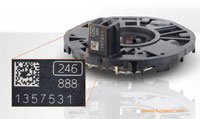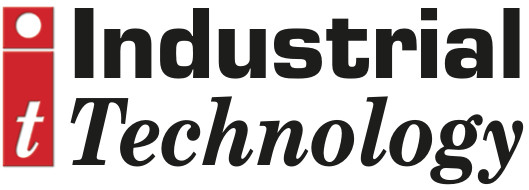
Posted to News on 27th Jun 2017, 00:00
Reducing risk in automotive recalls
Instances of recalls in the automotive industry seem to have increased somewhat in recent years as vehicles become more complex. These occurrences cost volume car makers dear, with millions of vehicles from different manufacturers being recalled across Europe, the USA and other regions including China.

Although some recalls are for minor issues, there are cases where the recall is safety critical – one in particular related to defects in brake hoses – and it is in these instances where accurate product traceability is absolutely paramount. Laser-based part marking is the solution preferred by many manufacturers within the automotive supply chain, as the process is ideally suited to many of the diverse materials used within the industry.
The permanent marking of safety-critical parts such as the brake hoses mentioned is an essential requirement within the automotive industry. In order to be resistant to a multitude of external influences during manufacture and use, the marks produced on automotive parts must be indelible and also resistant to temperature, light and lubricants.
The high marking quality and consistency delivered by lasers ensures optimum levels of legibility and secure traceability. Of even greater importance however, is ensuring that the correct marks are applied in the right position, on the correct part variant and on a non-defective part. Achieving these objectives ensures that scrap levels are drastically reduced and both productivity and efficiency levels are increased significantly.
As a result of increased risk of recalls, there are growing demands within the supply chain on quality management procedures. Combine this with the ever-present cost challenges within the sector, and it is clear that these can be significant factors in influencing competitive advantage for component manufacturers.
A unique and innovative closed loop machine vision and laser solution from Foba contributes to product safety and helps to reduce the risk of recalls. Provided as a completely integrated solution within the laser system, the patented vision system IMP (intelligent mark positioning) ensures consistent and correct marking with pre- and post-mark optical validation, as part of a three-stage closed-loop marking process.
Prior to marking, the system performs a part validation check to ensure that the part to be marked is the correct variant, followed by a part verification check to ensure that the part has not been marked previously. The automatic mark alignment function is used to check the position of the mark relative to the position of the to-be-marked component. It is important to note that the part does not have to align to the mark, as the mark position is automatically aligned accurately to the part. Only once these checks are completed satisfactorily is the laser mark produced. The post marking verification stage validates that the laser marks are where they are expected, checking for positioning, alignment and size. Optical character verification (OCV) then validates that every character marked by the laser matches the content expected. The contents of 1D and 2D Datamatrix codes are also read and compared to the content expected.
This unique three stage marking process, combined with the patented vision system (IMP), ensures the highest levels of process reliability and most importantly, zero defect marks. This is a crucial contribution to guaranteeing quality assurance and helping to ensure a “no fault forward” manufacturing process. The code reading option is especially important for documenting production and component data, and for the subsequent fast and accurate identification of a product in the event of a recall situation.
Whilst laser marking in itself cannot influence recalls due to mechanical or electrical failure, etc, Foba’s closed loop process can eliminate issues that may be attributed to incorrect part types or variants being used and also ensure that if traceability is required, that the marks will be in the place expected and readable.






